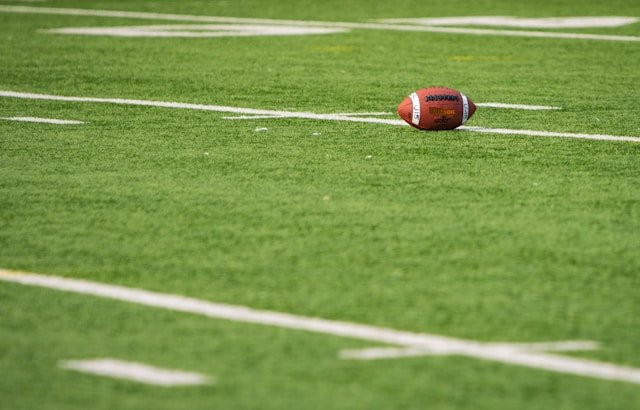You know that feeling when you’re absolutely convinced your fantasy team is going to dominate because you’ve studied every single stat from last season? Then game day arrives and everything falls apart spectacularly. Your “sure thing” player who averaged 25 points per game suddenly can’t hit the broad side of a barn. Welcome to the frustrating truth in sports: last year’s numbers might be completely useless for predicting what happens this year.
We treat sports statistics like they’re carved in stone tablets, but they’re actually more like sand castles. Beautiful to look at, but one wave of change can wash the whole thing away. And right now, we’re in the middle of a tsunami that’s reshaping how sports work at every level.
The problem isn’t just that sports evolve naturally over time. The entire ecosystem around sports has fundamentally changed in ways that make comparing this season to last season like comparing apples to spacecraft. Whether you’re checking an odds96 review for betting insights or just trying to understand why your favorite team looks completely different, the old playbook has been thrown out the window.
Your TV Changed Everything
Let’s start with something most people haven’t even thought about. The way we watch sports has completely flipped upside down, and that’s not just changing the fan experience. It’s actually changing how the games themselves are played.
Remember when pretty much every major game was on regular TV with the same commercial break patterns, the same camera angles, the same everything? Those days are over. Peacock carried an exclusive Friday night NFL game from Brazil in week one of the current season. ESPN+ carried an exclusive Monday Night Football game in week seven. These aren’t just different viewing experiences for fans; they’re completely different playing environments for athletes.
Think about it this way. When a basketball player takes a free throw, they’re used to a certain rhythm. The crowd noise dies down, the arena gets quiet, they go through their routine. But streaming platforms have different commercial patterns, different crowd mic setups, even different lighting for their cameras. Emarketer projects that by 2027, digital viewing of live sports will reach 127.4 million viewers in the U.S., a 21% increase from 2024, while cable TV viewing could dip to 75.4 million people.
Players are literally performing in different conditions than they were last year. Those free throw percentages, those clutch-time performance stats, those momentum statistics? They were all compiled under the old system. This year’s games are happening in a fundamentally different world.
The Robots Are Taking Over
Here’s where things get really wild. In March 2024, Major League Baseball (MLB) introduced an AI-powered system designed to enhance player analysis and overall team performance. This isn’t just some fancy computer program keeping better stats. This is artificial intelligence literally changing how athletes train, play, and think about their sport.
Imagine you’ve been throwing a curveball the same way your entire career. Your stats show you’re pretty good at it. Then an AI system analyzes high-speed video of your delivery and discovers that a tiny adjustment to your wrist angle could make you unhittable. Suddenly, all those previous statistics about your curveball effectiveness become historical artifacts.
This is happening across every sport at every level. Teams that embrace this technology are operating with insights that didn’t exist when last year’s stats were being compiled. It’s like some players showed up to this season with cheat codes while others are still playing by the old rules.
The AI systems can identify flaws that human coaches missed for years. That veteran pitcher who suddenly looks amazing after fifteen mediocre seasons? There’s a good chance artificial intelligence found something in his mechanics that completely transformed his effectiveness. But his career statistics still show all those mediocre years, making him look like a much worse pitcher than he actually is right now.
Context Is Everything
Sports statistics have always been tricky because they depend so heavily on circumstances. But we’ve gotten lazy about accounting for all the invisible factors that make numbers meaningful or meaningless.
Numbers don’t exist in a vacuum. When a quarterback throws for 4,000 yards, that number means different things depending on the weather he played in, the quality of his offensive line, the health of his receivers, even his personal life situation.
Here’s a perfect example. Last season, a running back might have had amazing rushing statistics because his team’s offensive coordinator called a lot of run plays in garbage time when the defense was playing prevent. This year, same player, same talent level, but the team has a new coordinator who prefers passing in similar situations. The player’s rushing yards per game tank, even though he hasn’t gotten any worse.
We see this constantly in basketball with three-point shooting percentages. A player might have shot 40% from beyond the arc last season, but half those shots came in the final minutes of blowout games when defenders weren’t contesting tightly. This year, the team is more competitive, so those same shots are coming in clutch situations with hands in his face. Same shooter, same mechanics, completely different results.
The Betting Trap
Sports betting has exploded in popularity, and that’s created a weird feedback loop that makes historical statistics even less reliable. Evidence for the Favorite-Longshot Bias is significant and prevalent over time, with bookmakers tilting their odds to maximize their own speculative profits by accommodating bettors’ irrationality.
Everyone’s using the same basic approach now. Look at last year’s stats, run them through some calculations, make your picks. But when millions of people are doing the same analysis, the obvious advantages disappear fast. The market gets smarter, and what worked last season becomes worthless this season. In plain English, this means the models that looked successful based on last year’s data might have been measuring completely the wrong things.
Information Overload
We’re drowning in statistics now. Every play gets tracked six different ways, every player has dozens of new metrics, every game generates thousands of data points. Teams are using analytics to show player data, game forecasts, and customized highlights, with analytics providing access to real-time information such as player performance statistics and game forecasts.
But here’s the problem with having too much information: when you measure everything, you’re guaranteed to find patterns that don’t actually mean anything. It’s like looking at clouds and seeing shapes. Sure, that one looks like a dragon, but it’s still just water vapor.
A player might show improvement in fifteen different advanced metrics while getting worse in the five metrics that actually matter for winning games. Last year’s breakout star could have been riding a wave of statistical luck across multiple categories rather than genuine improvement.
The Future Is Already Here
The bottom line is this: sports are changing faster than our ability to understand the changes. The sports analytics market size crossed $4.14 Billion in 2023 and is projected to observe around 30.1% CAGR from 2024 to 2032. That’s not just growth; that’s a revolution in how sports work at every level.
Modern recovery methods, advanced training techniques, and technological innovations are creating athletes who can do things that seemed impossible just a few years ago. The physical and mental baseline for professional sports has shifted, making historical comparisons increasingly meaningless.
Instead of treating last year’s statistics like gospel, we need to view them as one piece of a much larger puzzle. The smartest analysts already understand this. They use historical data as a starting point, not an ending point. They account for context, acknowledge uncertainty, and remain flexible when new information contradicts old assumptions.
The numbers never lie, but they don’t always tell the truth either. This season’s biggest surprises are probably already taking shape in ways that last year’s statistics couldn’t possibly predict.




